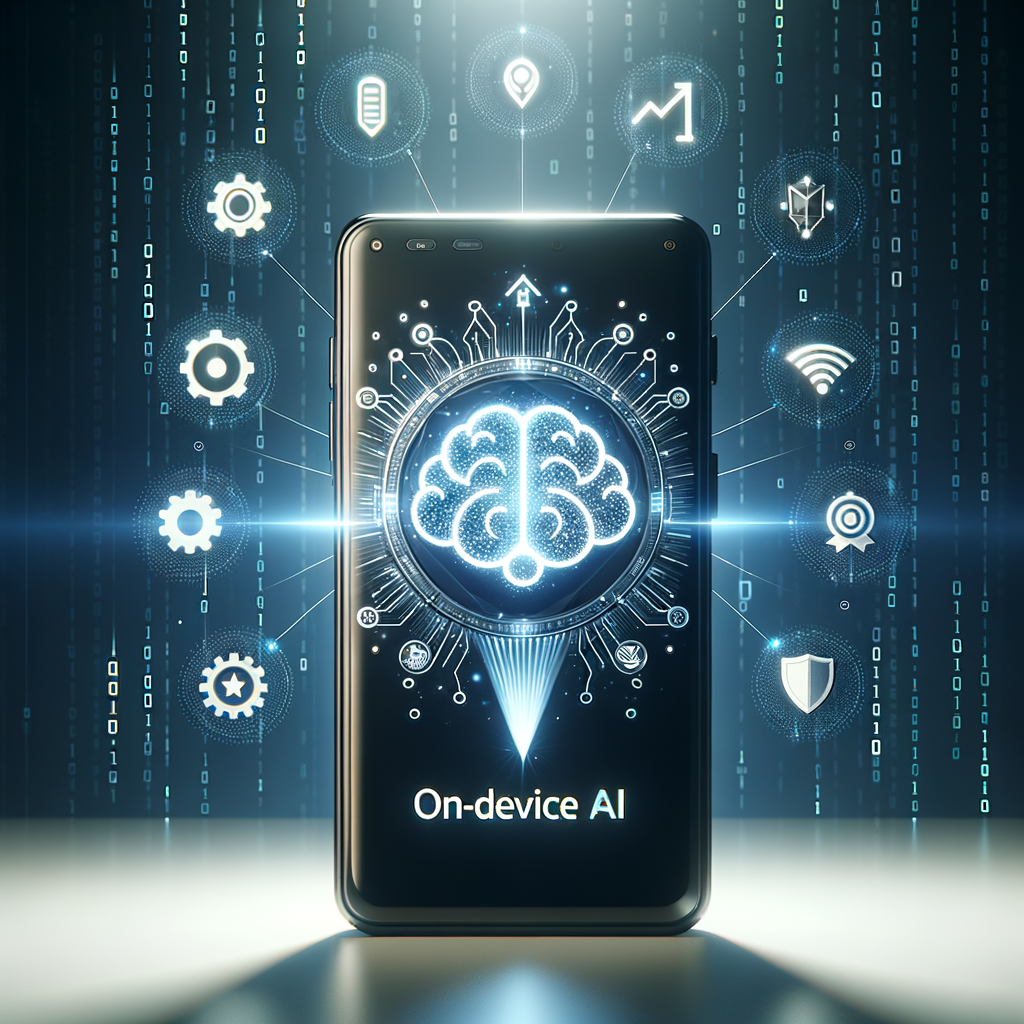On-Device AI: Discover Exclusive Smart Enhancements
How On-Device AI is Making Your Smartphone Smarter Than Ever
On-device AI is transforming the smartphone landscape, empowering devices with sophisticated capabilities that redefine user experiences. This evolution is largely driven by advanced generative AI chips, enabling an array of functions that previously seemed futuristic. In this article, we explore five game-changing features that make smartphones smarter, highlighting specific examples from industry giants like Samsung, Apple, and Google.
Real-Time Language Translation
Imagine traveling to a foreign country and reading signs or conversing with locals in their language, all without an internet connection. On-device AI makes real-time language translation a reality. With AI chips focused on processing data directly on your device, smartphones can now translate languages instantaneously and offline.
For instance, Apple’s iPhone models with the A-series chips leverage on-device machine learning to offer seamless translations through the Translate app. Samsung follows suit with its Galaxy series, integrating Bixby Vision to translate text captured by the camera instantly. Similarly, Google’s Pixel devices use their powerful AI chips to offer an impressive Google Translate experience without needing a network connection.
Personalized Assistance
Personalized virtual assistants, powered by on-device AI, provide users with tailored experiences by understanding individual habits and preferences. These advancements extend beyond executing simple commands to anticipating user needs, offering suggestions before they’re even asked for.
Apple’s Siri, for example, utilizes on-device AI to recognize patterns in user behavior. It can organize your day or remind you of deadlines by analyzing data stored directly on the device. Samsung’s Bixby learns from user interactions to offer a more personalized interface, while Google Assistant excels in predicting user needs based on contextual cues, thanks to its robust AI integration.
Privacy-Preserving Features
With growing concerns over data privacy, smartphones harness on-device AI to process sensitive information without sending it to remote servers. This approach not only ensures privacy but also enhances the device’s speed and efficiency by minimizing data transfer.
Apple has championed this movement with features like Face ID and on-device photo recognition, ensuring that personal data never leaves the user’s device. Samsung’s Knox security framework also benefits from AI, maintaining security through local data processing. Google’s approach with its Pixel series revolves around analyzing user data locally, offering security without compromising performance.
Smart Home Integration: Seamless Connectivity
Modern smartphones act as the central hub for smart home ecosystems, thanks in part to advanced AI. This integration allows devices to communicate effortlessly with various IoT gadgets, from thermostats to smart lights, enhancing convenience and energy efficiency.
Samsung’s SmartThings app exemplifies this, offering a seamless interface to control compatible devices. Apple’s HomeKit utilizes on-device AI to manage household gadgets intuitively, while Google’s Home ecosystem leverages the AI capabilities of Pixel phones for a cohesive experience. These features enable users to automate routines, such as adjusting lighting based on time of day, without a hiccup.
Enhanced Camera Capabilities
The photography capabilities of modern smartphones have witnessed a quantum leap due to on-device AI. These enhancements allow real-time photo processing and personalization, transforming average users into skilled photographers.
Apple’s iPhones utilize neural engines to enhance image processing, delivering features like Night Mode and Deep Fusion that produce stunning, low-light photographs. Samsung’s AI-powered Scene Optimizer improves photo quality by identifying the subject matter and optimizing settings accordingly. Google’s Pixel cameras have redefined smartphone photography with AI-driven functions, such as Astrophotography and Super Res Zoom, without any internet dependency.
Conclusion
The integration of on-device AI in smartphones has fundamentally altered how we interact with technology, paving the way for a smarter future. By focusing on direct data processing, these devices achieve real-time language translation, personalized assistance, enhanced security, seamless smart home integration, and extraordinary camera capabilities. As seen in models from Apple, Samsung, and Google, the future is not just smart—it’s intensely personal and adaptable to individual needs. Embrace this evolution, and discover the profound impact of these advancements in your everyday life.

